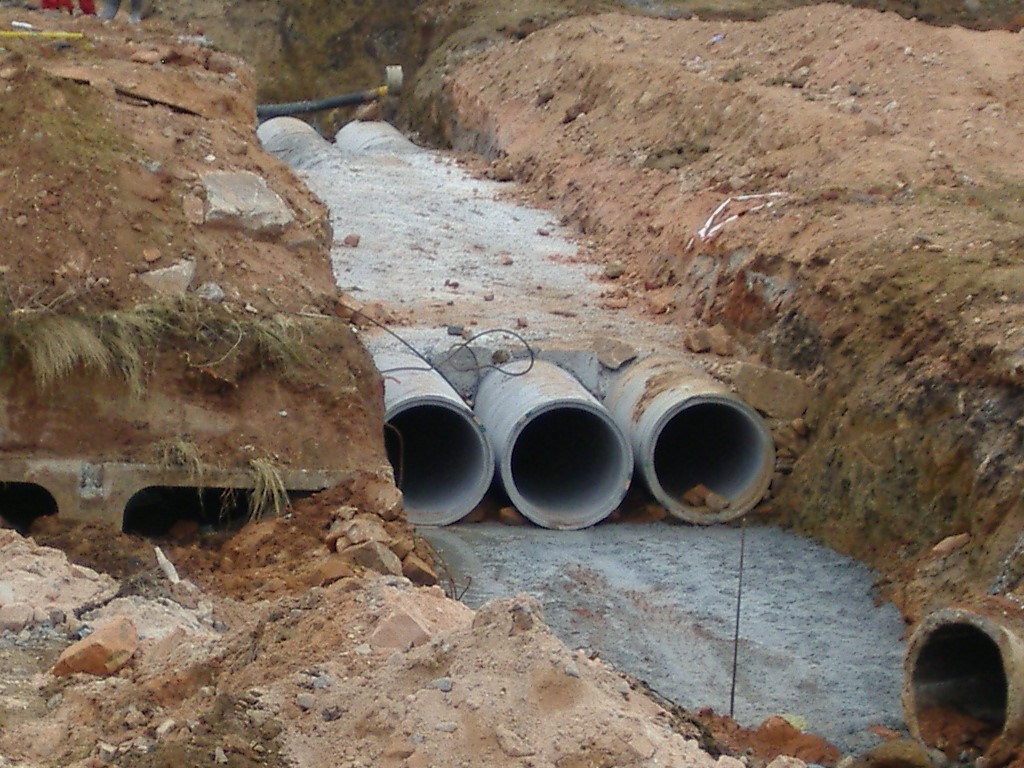
Description:
The Interlocking Joint pipe is a non-watertight pipe for use in stormwater applications. The male/female type joint is formed inside the wall of the pipe, i.e. there is no widening of the pipe, and therefore the outside dimensions of the pipe remain constant. The joint itself is used for centering the pipe during laying operations, thus making the process easier.
Custom-made Products:
Although the Interlocking Joint Pipe is primarily designed for use in a non-watertight pipe-line, rubber collars can be supplied to facilitate a measure of watertightness. These can be used for instances where ingress of groundwater, etc. must be avoided, and the more expensive rubber ring joint pipe is not necessary.
The pipes are manufactured in 2,44m and 1,22m, but can be manufactured in special lengths to customer specification.
The standard strength classes for these pipes are 50D, 75D and 100D (Refer to SABS 677). Special intermediate strengths or heavier loading requirements can be designed and manufactured. These are subject to various material constraints, but will be evaluated by our engineers on an ad hoc basis.
Accessories:
Rubber Collars
Rubber Collars can be supplied in order to improve the watertightness of the pipe-line. Your nearest Rocla branch can supply pricing on these.
Manholes
For access to long lengths of pipe-lines, Precast Concrete Manholes can be used to provide the necessary access for maintenance, inspection, etc.
Precast Concrete Manholes are also manufactured by Rocla.
Areas of Use:
Interlocking Joint Pipes are used primarily in stormwater drainage applications. They are used to move the water from the roads to the out-fall areas, as well as road crossings, where open water flow must pass underneath a road.
They are ideal in applications where maintenance-free, high quality solutions are required.
Handling and Installation:
When handling any concrete products, it is important to remember that, as concrete is a heavy and somewhat brittle material, bumps or shock loads of any description are liable to damage the product. This applies particularly to sharp edges.
When offloading the products on site, the equipment must not damage the products. Larger diameter pipes have a lifting hole in the barrel, which can be used to handle the product. A sling with lifting eye and spreader bar must be used in this application. Smaller diameter pipes have no such lifting-hole, and a 150mm sling passing around the center of gravity of the pipe must be used.
During the installation, the trench or excavation must be prepared to the Site Engineers specification. Once the bedding is in place it is ready for the pipes.
The pipes are lowered into place using the same handling technique as before. Once the pipes are lined up, they are put in place. At times it may be necessary to pull the pipe joint into position to fit into the already laid pipe. This can either be done by hand, or by means of a turfor system, which pulls the pipes together.
If required, the pipes must be sealed from water ingress by means of a rubber collar or bidum strip. Once this is applied, the next pipe can be lowered into position.
Backfilling of the pipe to the engineer’s specification is of utmost importance, as the pipe strength is designed to suit the installed condition. Care must be taken to compact underneath the pipe curvature to ensure a good foundation is in place. For more information on pipe installation, please use the contact us facility, as our staff can be of assistance on site with the installation activities.

